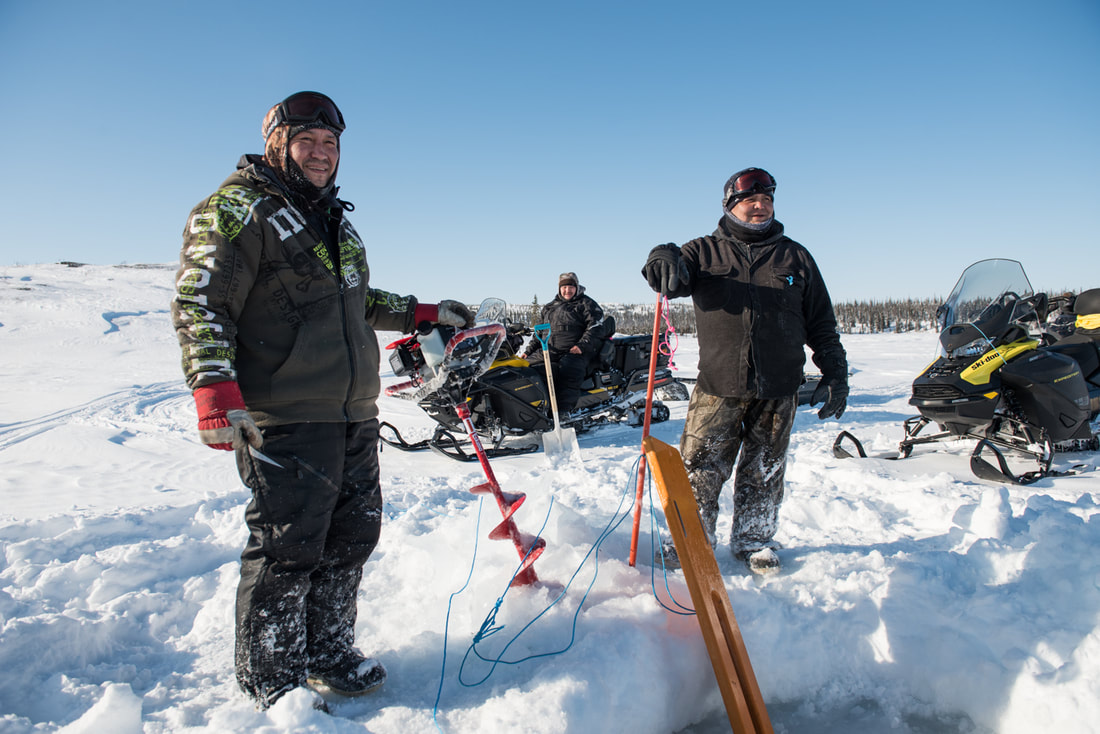 When the Thaidene Nëné Department announced it was in need of a new guardian last fall, Kevin Fatt jumped at the opportunity. “I’d been working in town way too much,” he explains. “I was always wanting to go out on the land, but there was never enough time.” A position with Ni Hat’ni Dene meant it would be Kevin’s job to spend time on the land. Kevin was no stranger to the department. He had been working on a contract basis since Ni Hat’ni Dene became a full-time, year-round program in January 2020. (Prior to this, Ni Hat’ni Dene guardians worked seasonally.) Kevin is well-suited to being a guardian. First, he has solid bush skills, having been raised by his maternal grandparents, Pierre and Mary Fatt. “They’re the ones that taught me how to live off the land,” Kevin says. “How to harvest, when to harvest, how to survive off the land.” Thanks to their careful instruction, Kevin came to love travelling on the land and spending time in the bush and on the tundra. Second, Kevin is a capable mechanic, who enjoys fixing things and problem solving. These are important skills for Ni Hat’ni Dene, who spend much of the summer and winter months away from the community out on patrol and need to be self-sufficient. Third, Kevin enjoys meeting new people, which is another feature of life on patrol. In the summer months especially, Ni Hat’ni Dene interact with visitors from all over the world, acting as ambassadors for the protected area. Like so many in the community, Kevin has to work to identify a favourite place in Thaidene Nëné. “It doesn’t matter where I am,” he says. “It’s just being out there.” If he has to choose though, he would pick Kaché (Fort Reliance) and Ts’ąkuı Theda (Lady of the Falls) because of the deep history that Łutsël K’é Dene have there and the many stories tied to the area. Kevin takes his position with Ni Hat’ni Dene seriously because it’s an inherited responsibility. “Our ancestors told us to watch over Thaidene Nëné,” he explains. “It’s our turn now to carry on their tradition.” Recognizing the importance of future generations to protecting the land and ensuring the continuation of Łutsël K’é Dene culture, Kevin wants to involve young people more in the work of caring for Thaidene Nëné, so one day they can take over this responsibility. This is part of a series of profiles about the staff, leaders, and community members who are hard at work implementing Łutsël K’é Dene First Nation's vision for the Thaidene Nëné Indigenous Protected Area. You can read the other profiles here. 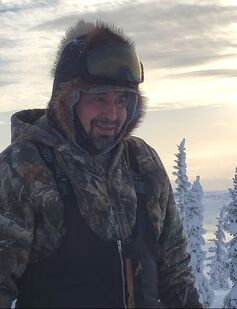 Paul Catholique is the newest Ni Hat’ni Dene guardian. Paul brings a wealth of experience living and working on the land to the crew. For a decade, he spent his summer months working as a guide at Frontier Fishing Lodge, showing guests the best fishing spots on Tu Nedhé (Great Slave Lake) and sharing the history and the culture of the area with them. He also spent ten years working for forestry, first as a fire crew member and later as a crew boss and supervisor. In between contracts, Paul would hunt and trap, using the skills he learned from his father, John Catholique (his mother is Bertha Collins [Tłı̨chǫ]). “From a young age, we went trapping,” he says, often working out of a cabin on Ts’ǫ Ɂáı Tué (Noman Lake). His uncle, Antoine Michel, also played a critical role in teaching Paul how to live off the land, especially beyond the treeline. “He used to take us out to the barrenlands every year,” Paul recalls. “As soon as it was frozen, we would go to the barrenlands by skidoo. We went often, sometimes three to fifteen times a year.” Paul credits his uncle Antoine with teaching him to navigate in the springtime, when it’s more dangerous to travel on the land—“You have been really knowledgeable at that time of year,” he says—and also with showing him the old routes and roads. Equally important to his education as a harvester and land user was knowledge shared by Łutsël K’é Dene elders: “When I was in town, I would listen to the elders talk and tell stories.” His greatest teacher, though, was the land itself. In Paul’s words, “I learned from going all over on the land, trapping, travelling, and just living on the land.” When asked about his favourite places in Thaidene Nëné, almost all of Paul’s picks are beyond the treeline: Ɂedacho Tué (Artillery Lake), Dené Bésda Tué Chogh (Fletcher Lake), Ɂejëre K’áanı́ Tué (Campbell Lake), and K’ásba Dezé (Ptarmigan River). Contrary to the image suggested by the name barrenlands, Paul see the tundra as a place of abundance, “Everything I need is there.” Hazú (tundra) is also special because of the connection to his ancestors. Paul’s great-grandfather Gahdële is buried on Ɂedacho Tué. Paul wanted to be a Ni Hat’ni Dene guardian because the job description is basically his life. “This position was made for me,” he says. More than this, Paul, like many in the community, wants to protect the land and Ni Hat’ni Dene play a critical role in that. “We need to protect the land, the water, the animals, the trees,” Paul explains. “We need to protect the old campsites, the old burial sites.” Working alongside the other guardians, Paul will be responsible for mentoring the summer students. By creating hands-on learning opportunities, he notes, Ni Hat’ni Dene “can help make it safer to send younger people out on their land.” Being a skilled and conscientious land user is important to Paul; so is modelling Łutsël K’é Dene values. As just one example, he notes that “Ni Hat’ni are teaching young people how to put nets in the water, so they can share the fish with the community, with the elders.” Paul also sees the important role that Ni Hat’ni Dene play in welcoming visitors to Thaidene Nëné, while also teaching them how to live and travel safely on the land. “The things we teach the young people are good for visitors too,” he says. “We don’t want them to be left out. Everybody is welcome.” This is the fifth in a series of profiles about the staff, leaders, and community members who are hard at work implementing Łutsël K’é Dene First Nation's vision for the Thaidene Nëné Indigenous Protected Area. You can read the other profiles here. 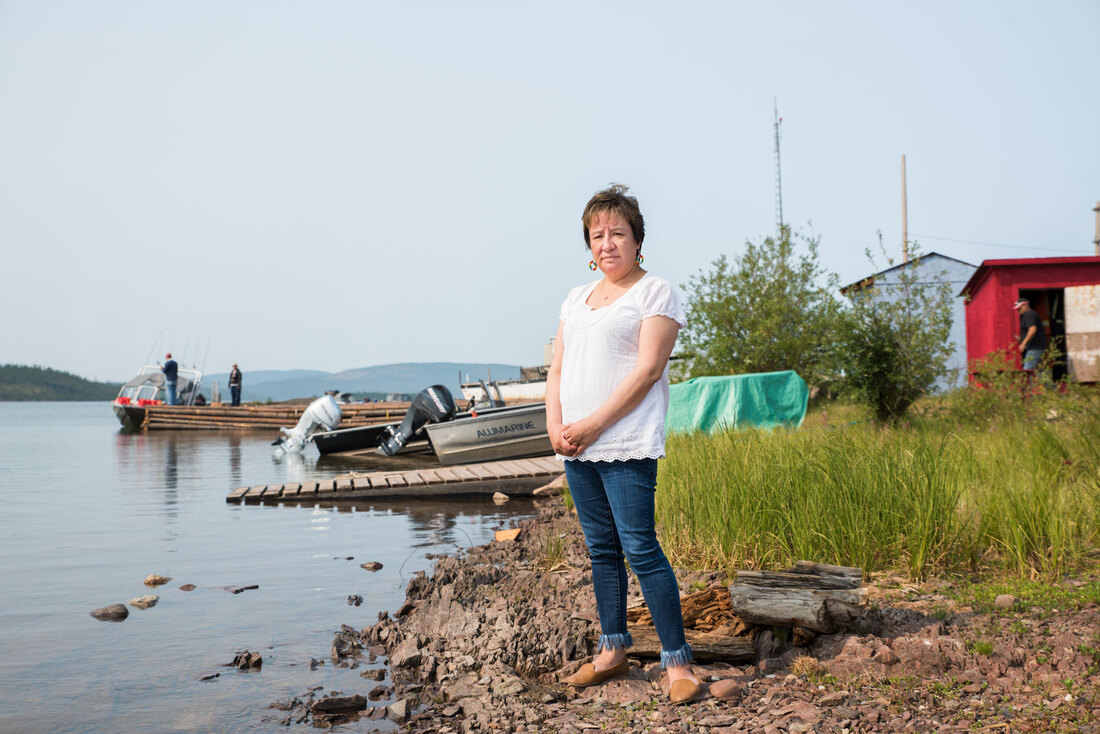 Prairie Desjarlais grew up in Łutsël K’é, raised in a traditional way by her grandparents, Madelaine and Jonas Catholique, her parents, JC Catholique and Cheeko Desjarlais, and her stepmother, Hanna Catholique. Prairie also grew up surrounded by the language. Her grandparents taught her to speak Dënesųłıné and she remembers only speaking her language with her cousin, Henry Catholique. Prairie has worked hard to bring up her own children and grandchildren in the same way, passing on the traditional values she learned from her elders and Henry. Prairie has been involved in different capacities with Thaidene Nëné since 2015. Currently, she is the coordinator for Ni Hat’ni Dene (Watchers of the Land), Thaidene Nëné’s Indigenous guardian program. Started in 2008, Ni Hat’ni Dene only operated in the summer months. As of January 2020, Ni Hat’ni Dene is now a year-round program. Prairie likes the pace of the work as the coordinator: “There is always lots to do. Even after five years, I’m learning every day.” She also enjoys her colleagues: “We have a really good staff team in Thaidene Nëné.” But more than anything, she likes the fact that by supporting Ni Hat’ni Dene, she is contributing to the protection of her territory: “It gives me a sense of security to know we have people out there on the land that are from the community and they are protecting the water, the land, the animals, the fish. They are watching who comes to Thaidene Nëné.” Prairie occasionally goes out on patrol with Ni Hat’ni Dene. For the most part though, she stays in town, making sure the four full-time guardians have whatever they need to do their jobs safely and effectively, whether they are watching over sacred sites on Tu Nedhé (Great Slave Lake), monitoring caribou on hazú (tundra), or interacting with visitors to Thaidene Nëné. For Prairie, one of the strengths of the program is the intergenerational nature of the Ni Hat’ni Dene crew: “The juniors are better with technology. The seniors have more advanced traditional skills. So they teach and learn from each other.” Prairie welcomes visitors to Thaidene Nëné. She wants them to see the beautiful and abundant land that has long been home to her ancestors. She also wants them to know that Thaidene Nëné exists because of the vision and the hard work of her community: “It took us 50 years, but we created a park and now we are carrying out our responsibilities as protectors of the land in our way.” This is the fourth in a series of profiles about the staff, leaders, and community members who are hard at work implementing Łutsël K’é Dene First Nation's vision for the Thaidene Nëné Indigenous Protected Area. You can read the other profiles here. 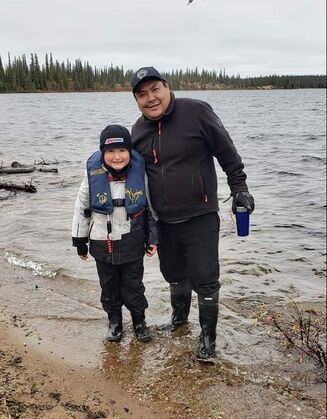 Jason Michel with his grandson, Easton. Jason Michel with his grandson, Easton. Growing up, Jason Michel didn’t spend a lot of time in town and he preferred it that way: “I was raised travelling on the land with my parents, Mary-Jane and Antoine Michael, and sleeping in a tent. I loved that. It was more fun out there than in town.” You can imagine how happy Jason was then when he was offered one of four full-time guardian positions with Ni Hat’ni Dene in January 2020. Not only would he get paid to spend time on the land, but he would also have the opportunity to pass on what he had learned from his parents. Jason is a senior guardian, which means that one of his responsibilities is to pass along traditional practices and knowledge to with the junior guardians and the youth who are part of the summer crew. One value he shares with them is the importance of listening to the elders: “They are wiser than us. What they say goes. If they don’t think it’s right, they tell us.” Inspired by the elders, Jason takes his role as a watcher of the land very seriously. He feels a deep responsibility as Łutsël K’é Dene and a senior guardian with Ni Hat’ni Dene to “protect the land.” Patrolling Thaidene Nëné, watching over the special places, the animals, and the fish are all part of his responsibilities as a guardian. As important as being a good steward is being a good host: “I enjoy welcoming people to Thaidene Nëné. I especially like being able to tell visitors that this is our park and that we are protecting our park. It feels good to protect our park.” While all of Thaidene Nëné is important for Jason, he especially likes spending time at Ɂedacho Kúe (Artillery Lake), where Ni Hat’ni Dene have a cabin, because it is so close to the caribou. Taking care of the caribou is an important part of the guardian program; it is also a key part of the responsibility that Jason feels to the land. In addition to sharing his experience on the land with other members of the Ni Hat’ni Dene, Jason loves spending time on the land with his wife, Jennifer Michel, and their family and passing on what he knows about the land, language, culture, and history of the Łutsël K’é Dene to his daughter, Desiree, and grandson, Easton. This is the third in a series of profiles about the staff, leaders, and community members who are hard at work implementing Łutsël K’é Dene First Nation's vision for the Thaidene Nëné Indigenous Protected Area. You can read the other profiles here. 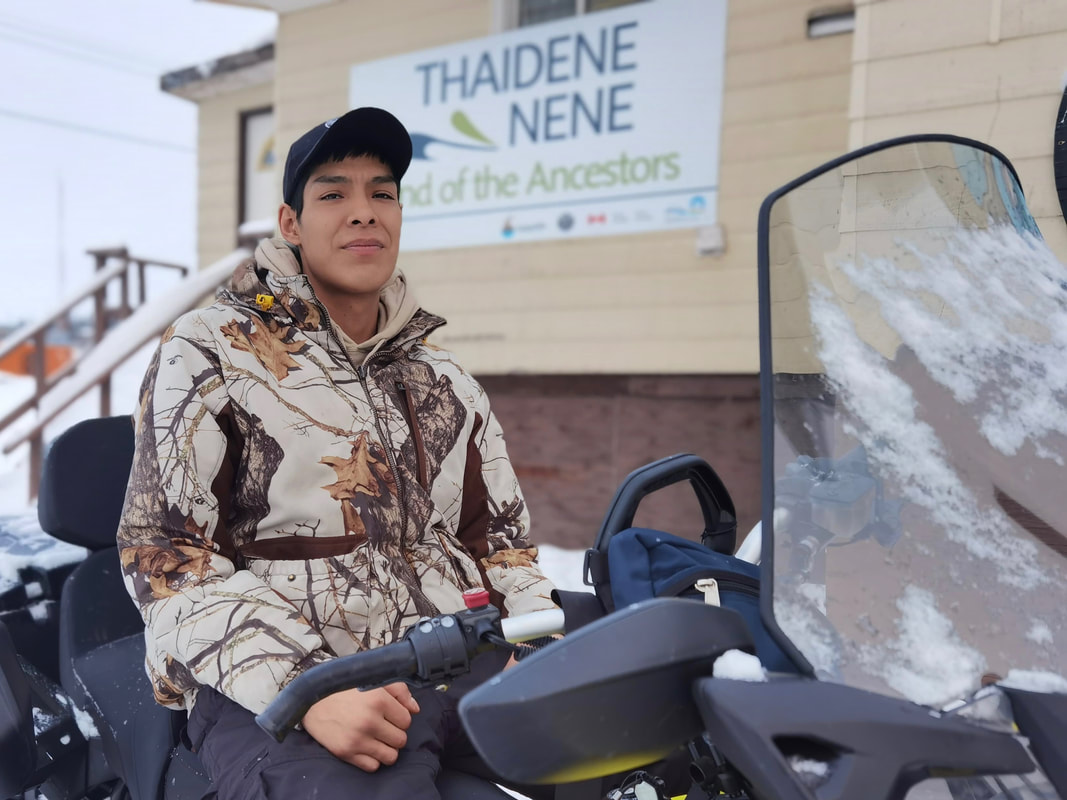 Like the other Ni Hat’ni Dene guardians, Denecho Catholique feels pretty lucky to be part of the crew: “I get to do what I love, which is travel on the land.” Two of Denecho’s favourite places to visit in Thaidene Nëné are Kaché (Fort Reliance) and Pike’s Portage. The latter is a special trail for Łutsël K’é Dene that crosses the treeline, connecting Kache to ɂedacho Kúe (Artillery Lake). “It’s a different country up there,” Denecho explains, referring to the barrenlands, or hazú in Dënesųłıné. As part of the Ni Hat’ni Dene crew, Denecho is also able to visit places in his ancestral territory he’s never been to. In the spring of 2020, for instance, the guardians travelled to Tł’ombálı Tué (Tent Lake), the place where his father was raised. This experience was especially meaningful because Denecho was able to travel there with his dad, Herman Catholique, and Herman hadn’t been to Tł’ombálı Tué in 40 years. As Denecho visits places both familiar and new in Thaidene Nëné with Ni Hat’ni Dene, he is honing his skills as a land user. In particular, he notes, “I’ve learned how to travel and navigate better.” Before he was hired as a junior guardian in January 2020, Denecho worked with Ni Hadi Xa (People Watching the Land Together), the environmental monitoring program for Gahcho Kué Diamond Mine. While he enjoyed being a monitor, the position with Ni Hat’ni Dene has allow Denecho to be closer to his family, including his twin daughters, McKinley and Tthaili. Both girls love spending time on the land with their dad, whether they are going out on the big lake or visiting with their grandma, Irene Catholique, at her place on the Snowdrift River. Denecho is more than a role model for his daughters. In his words, “As a Ni Hat’ni Dene guardian, I am a role model for the younger generations. That makes me feels good. It makes me feel special.” Whether he’s teaching local youth traditional practices, informing visitors about how to travel respectfully in Thaidene Nëné, keeping an eye on important cultural and historic sites, or assisting with fire fighting, Denecho is proud to be a watcher of the land, a Ni Hat’ni Dene. |
AuthorWrite something about yourself. No need to be fancy, just an overview. Archives
March 2024
Categories |
CONNECT |
VISIONWe are the Lutsel K’e Dene First Nation. Our vision for Thaidene Nëné is:
Nuwe néné, nuwe ch'anıé yunedhé xa (Our land, our culture for the future). We’re working with our partners to permanently protect Thaidene Nëné—part of our huge and bountiful homeland around and beyond the East Arm of Tu Nedhé. |
